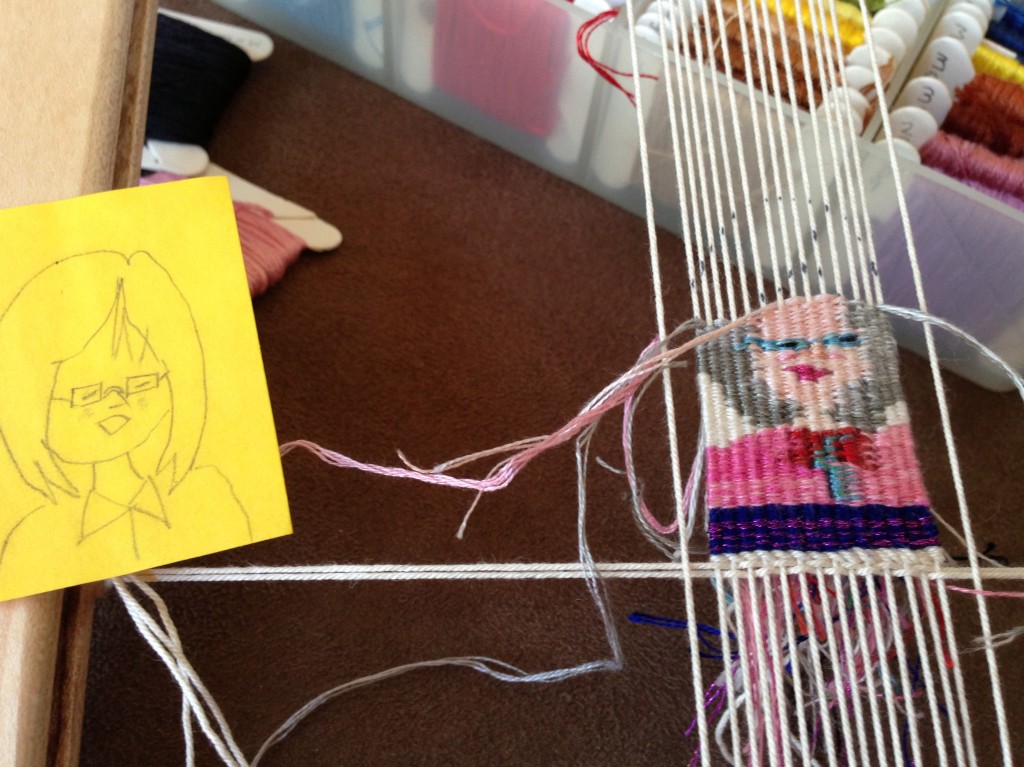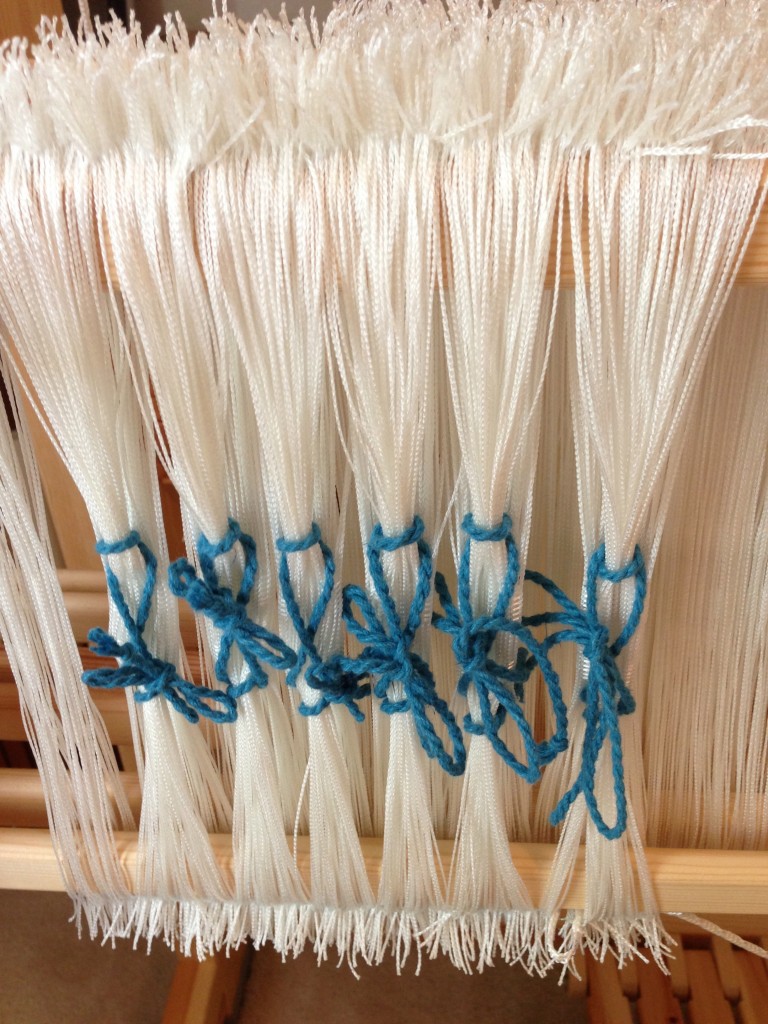Bold striped hems and four white stripes across this rug stabilize the unpredictable design. This is the rug that uses up several remnants from my fabric stash. My main agenda was to use up fabric.

I like rugs for the way they give the impression of a pathway. A place to put down your feet and walk. This rug does look like a path to me. Like a tapestry, this rug tells a story. I can see irregular changes of scenery. And the white stripes are like scheduled events that add structure and definition. It is good to have a path for your feet, and for your life.
Life is filled with changing seasons, and with schedules and interruptions. It isn’t always easy to see the right path. The Shepherd leads us on a path lined with goodness and mercy. These qualities are woven in. Like this double binding rug, mercy is always on the other side of goodness. And goodness backs up mercy. When these elements of kind-hearted design can be seen in our lives, though only as remnants and fragments, that is when we know we are on the right path.
May goodness and mercy follow you around.
Happy Weaving,
Karen


